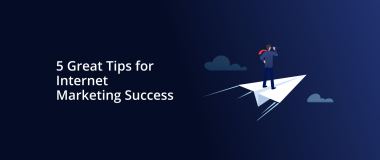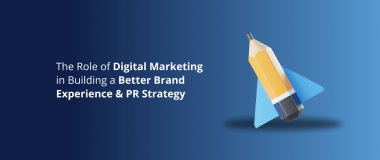Email marketing is one of the oldest digital communication channels and among the most successful ones. It is affordable, efficient, and easy to automate. On top of that, it enables you to reach out to an unlimited number of people at once, while implementing in-depth personalization.
However, without an efficient email marketing funnel, your efforts may fail to deliver the desired results. To avoid that, you need to map out and understand your customer’s journey, and nurture them with valuable content at each step.
This way you will not only be able to meet and exceed the impressive email KPIs and ROI that other businesses are showcasing, but will be able to strengthen your connection with your customers.
To help you achieve that, in this article, we provide 7 pro tips on how to build an efficient email marketing funnel that drives conversions and builds loyalty.
Read on to find out!
What Is an Email Marketing Funnel?
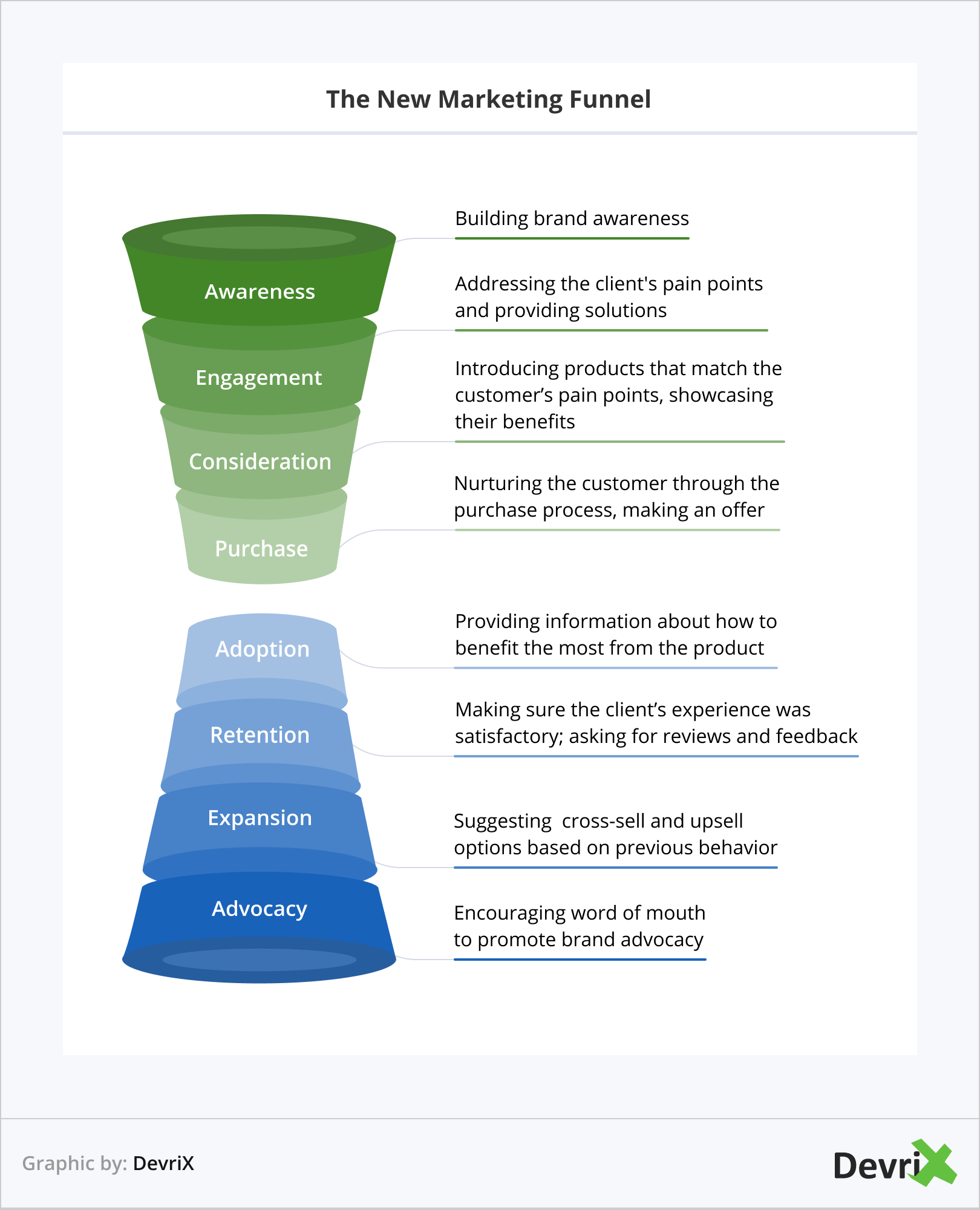
An email marketing funnel is a tool that allows marketers to align their emails with the customer’s needs at every stage of the journey. It’s a variation of the regular marketing and sales funnel with a focus on nurturing leads through strategically curated content delivered via emails.
By building a funnel, marketers are able to send the right emails at the right moment to the right leads. This allows them to introduce the brand, earn the customer’s trust, build a connection and then pitch their products and services so that they can make an offer. This approach boosts the likelihood of a lead being successfully converted into a paying client, and sets the foundation of a long-lasting and fruitful client-business relationship.
Furthermore, the email funnel includes not only the communication with the customer until they buy your products, it involves post-purchase marketing interactions as well. This allows you to help your clients with onboarding, avoid any potential buyer’s remorse, stimulate retention, increase loyalty, and encourage brand advocacy.
Do You Need to Create an Email Funnel?

If you are wondering whether your business needs an email funnel, the short answer is – yes. Yes, it does.
Building a funnel will help you streamline your email marketing efforts, and undertake a systematic approach, as opposed to sending emails only when you want to sell something to the customer or make an announcement.
Lead nurturing is a complex process that requires a deep understanding of the customer and their needs, and a careful approach. If you make the wrong step, this can cost you a high-quality lead that has the potential to become a loyal customer.
By setting up your funnel properly and monitoring the results, you can obtain valuable insight into your customer’s behavior and preferences. Based on this, you can find the best ways to help them move to the next stage of the journey, and the next, until they convert. Moreover, once they’ve made a purchase, you can guide them on the way to becoming a return client.
Without a funnel, you risk moving too fast or too slow and missing valuable opportunities to engage the customer and win their loyalty.
In a nutshell, if you want to minimize friction for the leads that enter the pipeline, and maximize email conversions, you need to create a marketing funnel.
Tips on Building an Efficient Email Funnel
Now that you know what the email marketing funnel can do for you, let’s have a look at building your own.
With these tips, we will walk you through the process and provide highlights on how to achieve the best results at every step:
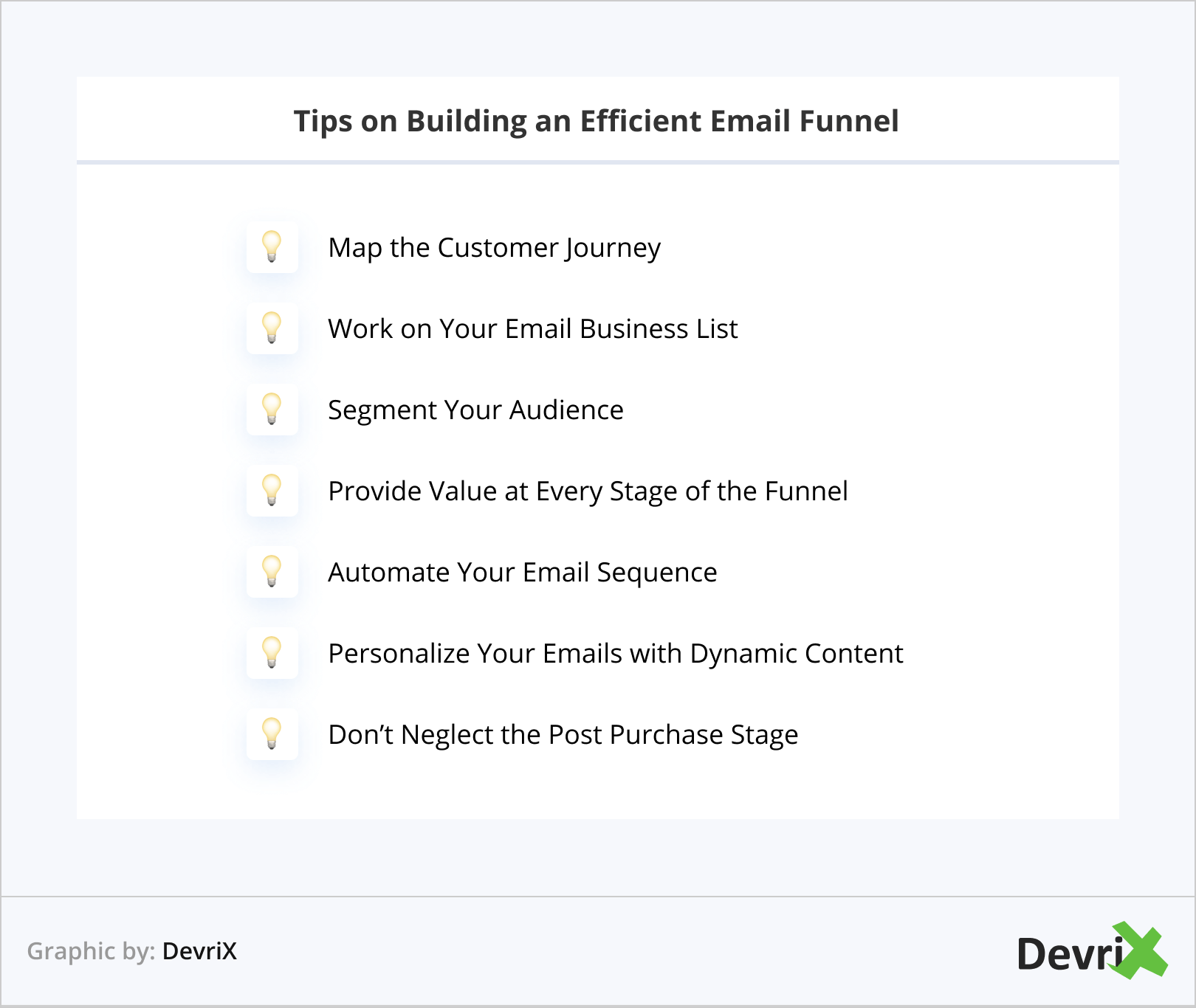
1. Map the Customer Journey
To set up your email funnel properly and be efficient, you need to be diligent in the preliminary work. To that end, your efforts should start with understanding your customers and mapping their journey.
The customer journey map (CJM) is a valuable tool for every business. It provides an overview of the client’s touchpoints with the company, and allows marketers to visualize behavior patterns. As a result, they can easily identify issues, and figure out how to fill in potential gaps in their strategy.
Once you’ve built a CJM, among other things, you can use it to inform your email funnel. This way you will know what your customer wants and needs at each stage of the journey, what issues they’ll encounter, and what are their pain points. Figuring how your company can step up and help them will show you what type of content to create and how to time your emails.
2. Work on Your Email Business List
Building a business email list with high-quality leads is the key to creating a successful email marketing funnel. If the people you send your messages to are not in your target group of viable prospects, even the best-curated email sequence will not be able to convince them to convert.
However, as you may have noticed, the funnel is narrower in the middle than it is at the top, which means that not all of the leads that sign up to your email list will become clients. While this shouldn’t bother you, it also shouldn’t discourage you from pursuing ways to increase the quality of the leads you generate.
By building accurate buyer personas and using different outbound and inbound lead generation strategies, you will be able to grow and improve your email list. This will increase the likelihood of your funnel delivering results and will boost your overall marketing ROI.
To achieve the best results, consider using a customer relationship management (CRM) tool in your lead generation efforts. This will provide you with detailed information about the customer’s interactions with the brand, and help you to align your funnel with the customer’s behavior.
3. Segment Your Audience
Segmentation allows you to pinpoint the exact place in the journey where the customer is at a certain moment, and target them with the proper content.
Furthermore, you can group your leads based on information about their demographics, profiles, pain points, needs, and other factors that are pertinent to your business.
Leveraging this information, you can make individual funnels for each product and service and create the feeling that the campaign was designed especially for the customer who receives the emails.
4. Provide Value at Every Stage of the Funnel
No matter if you are using email marketing templates or building your campaign from scratch, providing value at every stage of the funnel is key. After all, that’s how you keep the customer’s attention, and break the ice towards the next step in their journey. Regardless of whether a customer has just signed up for your email updates, or has already made a purchase with your brand, you need to have the right content for them.
- Awareness. Send welcome emails; introduce your brand’s values and ethics; provide information on what type of messages you send and what value they may have to the customer.
- Engagement. Address the client’s pain points and provide solutions; send educational content without mentioning your products or trying to push the sale.
- Consideration. Introduce the products that match your customer’s pain points; focus on the benefits of them, rather than the features.
- Purchase. Make an offer the customer can not refuse; provide discounts, free shipping, or other viable deals.
- Adoption. Provide information about how to benefit the most from the product; send tutorials and how-to guides.
- Retention. Make sure the client’s experience was satisfactory; ask for reviews and feedback; invite the customer to your loyalty program and any online communities you maintain.
- Expansion. Suggest further options so you can cross-sell and upsell based on previous purchases and behavior.
- Advocacy. Encourage word of mouth so that the customer recommends you to their family and friends; promote your referral and affiliate programs; invite the customer to share experiences on your preferred word-of-mouth channels.
Whatever stage the customer is in, make sure that in your emails you focus on them and how they can benefit from doing business with your brand, rather than on what you can offer. People rarely care about features, they want ways to make their lives easier and find solutions to their problems.
5. Automate Your Email Sequence

Sending individual emails to all your clients may be possible when you are running a small operation or service a limited number of high-end accounts. However, when you have a large email list, manually conducting reach-out and implementing an email funnel is a tedious and exhausting job.
Luckily, one of the greatest advantages of email marketing over other communication channels is that it’s possible to completely automate your campaigns.
You can use all the information you’ve gathered so far to set up your automated email funnel and achieve maximum results with minimal effort.
Furthermore, most automation tools on the market collect valuable data about how recipients engage with your emails and how well different campaigns perform. Using these insights, you can improve your funnel’s efficiency and boost results.
You can also conduct A/B tests to better understand what content and setup resonates best with your customers, and optimize your email sequence.
6. Personalize Your Emails with Dynamic Content
Email personalization is vital for your funnel’s success.
In fact, it is so important that companies report to obtain a 760% boost in their email revenues when they invest in personalization. At the same time, 71% of clients say that they are more likely to open and engage with personalized emails.
However, to make the customer feel your emails are created especially for them, personalization should go beyond inserting their name in the message.
By using tools that support dynamic content, the information of each email you send will be altered to best match the receiver’s profile and history. This way you will fully utilize the data you’ve gathered, and deliver a unique personalized experience to your clients.
7. Don’t Neglect the Post Purchase Stage
Your marketing efforts shouldn’t end with the customer buying your products. Properly setting up your email funnel for the post-purchase stage allows you to retain your clients, strengthen your relationship, and win their loyalty.
We already have mentioned what type of content to include in your sequence after the sale. However, keep in mind that the customer remains a lead even beyond the brand advocacy moment, and yet, this doesn’t mean that their journey starts all over again.
You should approach existing customers as warm leads with benefits. Based on the type of products you provide, you can consider creating a stand-alone funnel for them, or make sure that the content is properly adapted to them. Regardless of which option you choose, you shouldn’t treat returning customers as strangers.
By showing them that you value their business, want to go the extra mile to know them better, and prioritize them over newcomers, you can increase the chances of them remaining loyal and staying with you for the long run.
Bottom Line
Although nowadays, businesses have multiple ways to reach out to their customers online, and strive to develop omnichannel digital strategies, email retains an important position in the modern marketer’s toolset.
Businesses that create email marketing funnels are more likely to successfully nurture their leads and boost email conversion rates. Furthermore, they, more often than not, manage to create lasting connections with their customers and increase advocacy.
With that being said, building an email funnel is not an easy task. However, with a little perseverance and some elbow grease, you can achieve stellar results at scale!
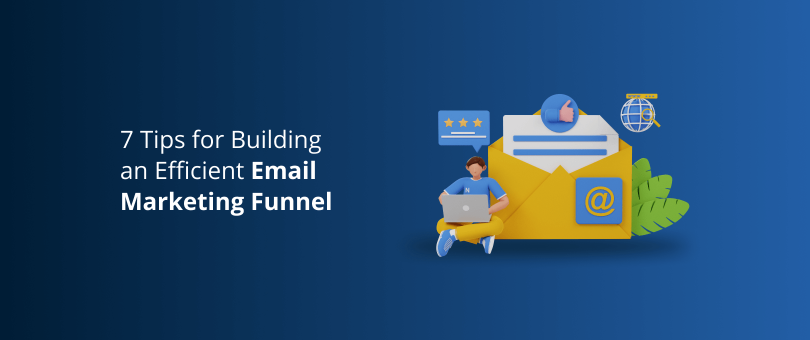
![[Infographic] 24 Fundamental Email Marketing Stats](https://devrix.com/wp-content/uploads/2018/01/Infographic-24-Fundamental-Email-Marketing-Stats-380x160.png)

